Welcome to Catnapin's
Prickly Succulent Gallery
Prickly Pear Cactus



There are many species of Prickly Pear in North America. Some are low
growing, some make large dense mounds, others have trunks like
trees. Many Prickly Pear species interbred, making identification difficult.
Prickly Pear do not have normal leaves. The segments are flat stems called
joints (pads or nopalitos), which vary in size and shape even on the same plant.
The succulent flesh is edible in many species. When a
joint is young it has short narrow leaves that look like fat green spines.
Evenly spaced across the joints are areoles (the spots) out of which spines and glochids
(prickles) grow. Species identification require observing the color, size, shape and placement of these parts
as the flowers are very similar.
Flowers are 1"-4" wide. Most grow from the areoles on the top edge of the
joint, but some species also flower from side areoles. Though most
are yellow, orange, or red, some species have white, green, or pink also.
Some flowers start off as yellow but age to orange or red.
Prickly Pear flowers do not actually have
petals, Instead, that structure is called tepals.
Most fruit (pear or tuna) ripen to red or purple, many of which are edible
and can made into a jelly that tastes like grape. The skin of
the fruit is a modified joint, so most have glochids (prickles).
Most of the species listed here are variable in
growth patterns. They have gone through many
scientific names as those studying them decide what aspects determine species,
subspecies, or definable variation. All have
multiple common names that are still used regionally.
Cactaceae - Cactus family
Texas Prickly Pear (Cactus Apple, Nopal Prickly Pear) Opuntia engelmannii
var. lindheimeri
This is the common large sprawling mass of prickly pear found in
my region. The joints (pads) are edible. The pear (tuna) is edible and
makes a wonderful jelly. The juice stains.
(Native of Texas - Taylor, Coleman, Brown, Coke)
Plant size: Mounding semi-erect shrub, short trunk to 9 feet tall
Joints: to 1 foot tall, sub-circular, sometimes elongated,
occasionally broader than wide, yellow-green to
blue-green
Areoles: 5-8 per diagonal row on joint surface, evenly
distributed, circular to oval, wool tawny aging to black
Glochids: nearly encircling areole, yellow to red-brown aging
to gray/black, irregular lengths, 3/8" long
Spines: 0-6 per areole, evenly distributed, yellow, sometimes
with red/brown base, aging to gray/black, up to 3" long, flattened near base,
straight to curved
Flower: Bloom March-June, uniformly yellow sometimes buff,
orange, pink, red, white. Under 2" across. Filaments, anthers and style cream,
stigma lobes yellow-green to green
Fruit: red/purple skin and flesh, elongated barrel, 2 1/2"
tall, spineless but with lots of glochids (prickles), many areoles near top
Hybridizes with: Opuntia stricta, Opuntia macrorhiza, and
Opuntia phaeacantha
Specimen A
Photos taken in Taylor County, Texas, September 2004
Specimen B
Photos taken in Taylor County, Texas, October 2005
Flowers from Assorted Plants
A wide array of colors bloom on this species, even on the same joint (pad).
Photos taken in Taylor County, Texas, May 2004, May-June 2005
Cactaceae - Cactus family
Erect Prickly Pear (Southern Spineless Cactus, Pest Prickly Pear) Opuntia stricta
Joints (pads) are oval with a pointed
top. Few areoles, mostly on the edge. Golden glochids (prickles) tufts on top side.
(Native of Texas - not listed in my area)
Plant size: sprawling to erect, to 6 feet tall, without central trunk
Joints: to 16" tall, green, obovate (egg-shape). Raised areoles
on joint edge give a scalloped appearance.
Areoles: 3-5 per diagonal row, oval, 3/16" tall, dense wool tan
Glochids: tiny, in crecent yellow aging brown
Spines: 0-11 per areole, spines can be in every areole to only
marginal ones or absent. Spines spread in all directions, yellow aging to brown,
straight or curving, longest is stout, 1 1/2" long, not barbed
Flower: blooms, February-July, solid light yellow, 1 1/4" wide,
filaments yellow, anthers yellow, style an stigma lobes yellow
Fruit: purple skin, purple flesh, 2 1/4" long, few areoles
Hybridizes with: Opuntia engelmannii var. lindheimeri
This species is not listed in my area. The identification is
a guess for the best description to match the plants. Of course, these could be
hybrids. All the specimens below grow next
to a railroad bridge in a location that collects water from surrounding fields
so the original joint may have come from anywhere. If you have a better identification, I would
like to hear from you.
Specimen A
This specimen has the pointiest joints (pads). It has only a
few spines, which are very long and mostly on the edge.
Photos taken in Taylor County, Texas, October 2005
Specimen B
This specimen has more round joints (pads) and only a few narrowly pointed ones.
Photos taken in Taylor County, Texas, October 2005
Specimen C
This specimen has round joints (pads) with pointed tops. It
also has the fewest areoles per joint. The third picture is a side view showing
the thickened base of the joint.
Photos taken in Taylor County, Texas, October 2005
Cactaceae - Cactus family
Tulip Prickly Pear (Mojave Prickly Pear) Opuntia phaeacantha
Pears are edible if the flesh turns red.
(Native of Texas - Taylor, Coleman, Brown, Nolan)
Plant size: decumbent to 3 feet tall, trailing, without central trunk
Joints: to 10" tall, obovate (egg-shape), green with purple
blush after stress (cold weather)
Areoles: 5-7 per diagonal row, obovate (egg-shape), 3/8" long,
wool tan to brown aging to gray
Glochids: dense crescent fluff at top of areole, 3/16" long tan to red-brown
Spines: 0-8 per areole, often nearly spineless. shorter spines
can be straight, curved, or twisted, brown to white. Central spines point down
or spreading, red/brown, gray/black or tan, flattened near base, to 3" long.
Flower: Bloom April-July, yellow with red base (rare entirely
pink or red), 1 1/2" wide, filaments green at base and yellow/white top, anthers
yellow, style white, stigma lobes green to yellow-green
Fruit: red/purple skin, green flesh (in very good year flesh
will turn red and juicy), to 2" tall, areoles
Hybridizes with: Opuntia engelmannii, and Opuntia ficus-indica
Specimen A
Photos taken in Taylor County, Texas, May 2004
Specimen B
This is a young joint.
Photos taken in Taylor County, Texas, October 2005
Specimen C
Photos taken in Taylor County, Texas, October 2005
Specimen D
Tuna (fruit) had fallen off the plant. Note the reddish blush on the edge.
Photos taken in Taylor County, Texas, October 2005
Specimen D
The top of the tuna (fruit) had been eaten to show the seed.
Photos taken in Taylor County, Texas, October 2005
Cactaceae - Cactus family
Prickly Pear **zc 3** Opuntia sp.
Similar to Opuntia phaeacantha except areoles are not woolly. Might be Opuntia strigil.
(Native of ?)
Plant size: Small, reclined where most joints touch the ground, about 12" tall and 6 feet long
Joints: Green, not quite round, under 8" wide
Areoles: Flat, not wooly
Glochids: short, mostly on the joint's edge, very few on the face, brown
Spines: Round, grow from almost all the areoles. 2 spines come
out of the lower part of the areole and point downward. Longer spine grayish-brown
with rings near base,1 1/2"-2" long. Shorter spine is cream/white, 1/2" long.
Longest spines are on the joint edge only, red.
Flower: ?
Fruit: ?
Specimen A
Photos taken in Taylor County, Texas, September 2005
Specimen B
Photos taken in Taylor County, Texas, October 2005
Cactaceae - Cactus family
Prickly Pear **zc 4** Opuntia sp.
(Native of ?)
Plant size: Semi-erect, 3 feet tall and spreads out 8 feet or more
Joints: Dark green, not quite round, about 10" wide
Areoles: Flat
Glochids: Short, reddish-brown, longest are on the joint's edges, very short on the face areoles
Spines: Round; 1-4 spines come out of the lower part of the areole and point downward, brownish gray, 1/2"-2" long
Flower: ?
Fruit: ?
Specimen A
Photos taken in Taylor County, Texas, October 2005
Cactaceae - Cactus family
Eastern Prickly Pear (Devil's Tongue) Opuntia humifusa
Very cold hardy. This plant lives in all central and eastern States and into Canada. Does not tolerate shade.
(Native of east Texas - Brown)
Plant size: forming clumps from tuber-like roots or sprawling,
only 1-2 pads tall, to 18" tall
Joints: to 7" tall, green to dark green, circular to oblong,
wrinkled when stressed
Areoles: 4-6 per diagonal row, oval to circular, 1/8" wide, not
raised to sunken, wool tan to brown
Glochids: dense crescent, yellow to red-brown
Spines: 0-3 spines per areole, spreading, white to brown,
straight and stout, to 2 3/8" long, often one deflexed spine present
Flower: blooms February-August1 1/8" wide, solid bright yellow,
filaments yellow to orange, anthers cream, style and stigma lobes white
Fruit: skin slowly ages to brown/red, flesh green and sour (in
very good year flesh will turn reddish and sweet) 2" tall, tapered base, areoles
Specimen A
Photos taken in Van Zandt County, Texas, November 2006
Other Species with Round Joints in My Area
Purple Prickly Pear (Blackspine Prickly Pear) Opuntia macrocentra
(Native of Texas - Tom Green)
Plant size: erect to decumbent, to 3 feet tall
Joints: to 8" tall, greenish tinted purple near areoles and margins (more so under stress), obovate (egg-shape)
Areoles: 6-10 per diagonal row, oval, 1/4" wide, wool tan to white aging to black
Glochids: dense crescent at lower part of areole, red/yellow aging to brown
Spines: 0 or 1-15 per areole (mostly at edge of joint), erect
to spreading, unruly, straight or curving, flexible, flattened base, longest ones
red/brown to black or yellow to red or white, often 5" occasionally 6" long,
Flower: blooms March-June, yellow with red base, 1 1/2" wide,
filaments and anthers yellow, style cream, stigma lobes green
Fruit: red/purple, 1 1/2" long, top where flower grew is very deep, lots of areoles, edible
Twistspine Prickly Pear (Plains Prickly Pear, Western Prickly Pear) Opuntia macrorhiza
Similar to Opuntia phaeacantha.
(Native of Texas - Jones, Shackelford, Brown, Runnels, Coke, Fisher)
Plant size: forms clumps from tuber-like roots, without central trunk, less than a foot tall
Joints: to 4 1/2" wide, dark dull green, obovate (egg-shape) to circular, stress causes cross wrinkles
Areoles: 5-8 per diagonal row, oval, 3/16" diameter , wool tan
Glochids: dense tuft, yellow, tan to red-brown aging to brown
Spines: 0-4 per areole, white to red-brown, straight, some flattened, to 2" long
Flower: blooms May-June, yellow with red base star, 3" wide,
filaments yellow, anthers yellow, style white, stigma lobes cream to yellow
Fruit: green to yellow to dull red, 1 1/2" tall, areoles, edible
Hybridizes with: Opuntia engelmannii var. lindheimeri
Marblefruit Prickly Pear Opuntia strigil
Very spiny pads. Spines on sides of pads face down, yellow/brown, pad edges
covered in prickles. Yellow tipped spines.
(Native of Texas - Nolan)
Plant size: erect to sprawling, to 3 feet tall
Joints: to 6 3/4" tall, green, obovate (egg-shape) to circular
Areoles: 7-10 per diagonal row, oval, 1/4" tall, wool yellow-brown to brown aging to gray
Glochids: crowded in crescent, radiating on old joints, yellow
Spines: 5-10 per areole, reflexed or spreading, longest ones
near edge can be erect, red-brown with dark annular rings, yellow tip aging to
black, straight or weakly curved, round, to 1 1/2" long
Flower: bloom April-May, cream to yellow with orange star, flat
ends, 1 1/4" wide, filaments cream/yellow, anthers pale yellow, style pale cream, stigma lobes
pale greenish-yellow
Fruit:" blotchy skin, pink-green-white, nearly spherical, 1" tall, many areoles
Other Species with Elongated Joints in My Area
Barbary Fig (Indian Fig) Opuntia ficus-indica
This plant has been domesticated as a crop plant in semiarid regions around the world.
Cultivated to grow few spines, few glochids
(prickles). Not winter hardy. Also used to farm cochineal scale insects for
their red dye.
(Introduced, may have originated in central Mexico - Brown)
Plant size: Tree to 18 feet tall, trunk to 18" thick
Joints: green, oblong to narrow, to 2 feet long, edible
Areoles: 7-11 per diagonal row, rhombic to sub-circular, wool brown
Glochids: tiny, yellow aging to brown
Spines: 0-6 per areole, spiny to spineless, erect to spreading,
white, tan or brown, straight to slightly curved, base flattened, usually under
1/2" long but can be 1 1/2" long, 2 small bristle-like deflexed spines
Flower: blooms in April, solid yellow to orange, blunt end, 2"
wide, filaments and anthers yellow, style bright red, stigma lobes yellow
Fruit: yellow to orange to purple, to 4" tall, lots of areoles evenly distributed, edible
Cow’s Tongue Opuntia engelmannii var. linguiformis
In my area, this plant is found in rock gardens but has not gone wild.
(Native of Texas, far south and far west - but not listed wild in my area)
Plant size: Mounding semi-erect shrub, short trunk to 9 feet tall
Joints: can be over 3 feet tall, very elongated with a long taper narrowing to a rounded
tip making them resemble a cow's tongue, yellow-green to blue-green
Areoles: 5-8 per diagonal row on joint surface, evenly
distributed, circular to oval, wool tawny aging to black
Glochids: nearly encircling areole, yellow to red-brown aging
to gray/black, irregular lengths, 3/8" long
Spines: 0-3 per areole, mostly on edge areoles, yellow aging to black, up to
1 1/2" long, flattened near base, straight to curved
Flower: Bloom April-May, uniformly yellow sometimes buff,
orange, pink, red, (rare white). Under 2" across. Filaments, anthers and style cream, stigma lobes greenish
Fruit: red/purple skin and flesh, elongated barrel, 2 1/2"
tall, spineless but with lots of glochids (prickles), many areoles near top
Hybridizes with: Opuntia stricta, Opuntia macrorhiza, and Opuntia phaeacantha



Email:
wildflowers"at"catnapin.com
to reduce spam, change "at" to @
please be specific








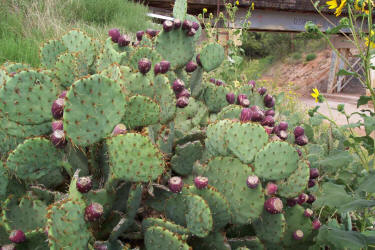
_small.jpg)
_small.jpg)
_small.jpg)
_small.jpg)
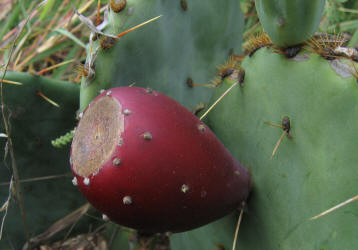
_small.jpg)
_small.jpg)
_small.jpg)
_small.jpg)
_small.jpg)
_small.jpg)
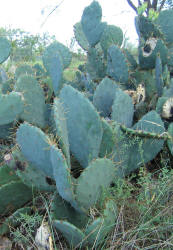
_small.jpg)
_small.jpg)
_small.jpg)
_small.jpg)
_small.jpg)
_small.jpg)
_small.jpg)
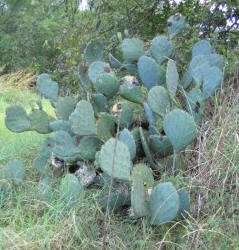
_small.jpg)
_small.jpg)
_small.jpg)
_small.jpg)
_small.jpg)
_small.jpg)
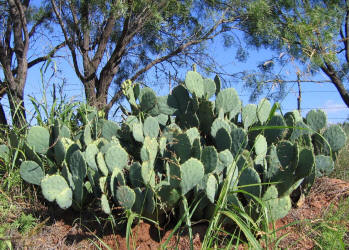
_small.jpg)
_small.jpg)
_small.jpg)
_small.jpg)
_small.jpg)
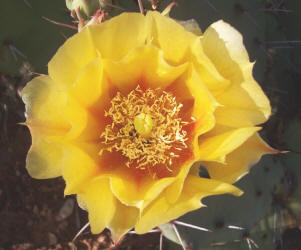
_small.jpg)
_small.jpg)
_small.jpg)
_small.jpg)
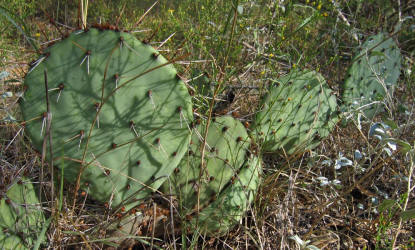
_small.jpg)
_small.jpg)
_small.jpg)
_small.jpg)
_small.jpg)
_small.jpg)
_small.jpg)
_small.jpg)
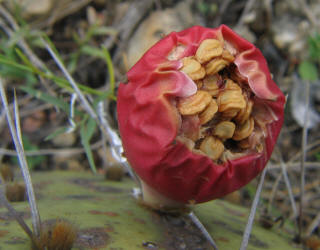
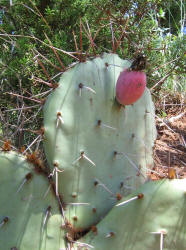
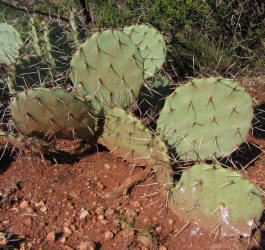
_small.jpg)
_small.jpg)
_small.jpg)
_small.jpg)
_small.jpg)
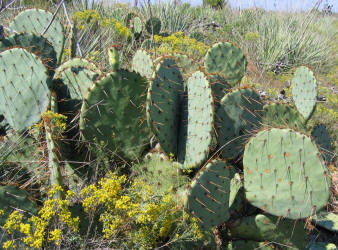
_small.jpg)
_small.jpg)
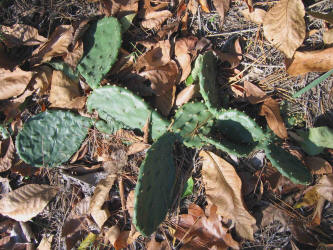
_small.jpg)